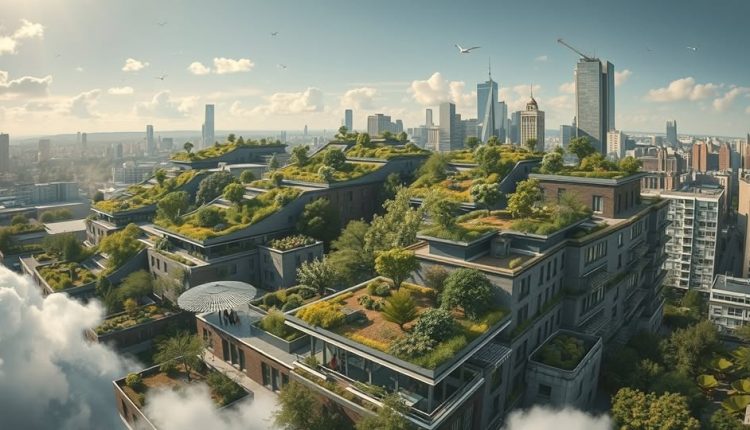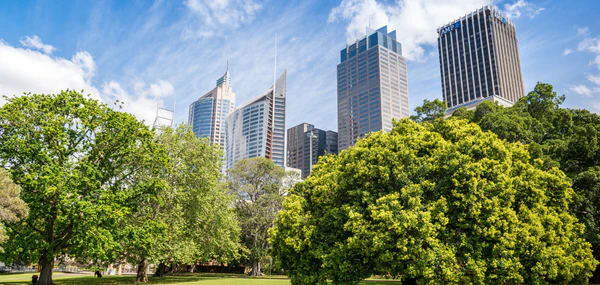Introduction
Climate resilience and sustainable urban planning are crucial for cities facing the growing impacts of climate change. Therefore, as global temperatures rise and extreme weather events become more frequent, cities must adapt quickly. As a result, cities worldwide are experiencing increasing threats from extreme weather events, rising sea levels, and resource depletion. Consequently, urban planners are prioritizing climate resilience and sustainability to create adaptive, livable, and environmentally friendly urban spaces. Ultimately, this blog explores how cities are embracing these principles and the innovative strategies shaping the future of urban development.
As climate change accelerates, cities worldwide are facing increasing threats from extreme weather events, rising sea levels, and resource depletion. In response, urban planners are prioritizing climate resilience and sustainability to create adaptive, livable, and environmentally friendly urban spaces. This blog explores how cities are embracing these principles and the innovative strategies shaping the future of urban development.
What is Climate Resilience in Sustainable Urban Planning?
Climate resilience in sustainable urban planning refers to a city’s ability to anticipate, prepare for, and recover from climate-related disasters while maintaining essential functions and services. It involves designing infrastructure, policies, and systems that can withstand extreme conditions, from hurricanes and heatwaves to floods and droughts.
Key Strategies for Climate Resilience and Sustainability
1.Green Infrastructure and Nature-Based Solutions
Cities are integrating green infrastructure to absorb excess rainwater, reduce urban heat islands, and improve air quality. Moreover, these solutions enhance biodiversity and contribute to overall ecological balance. For instance, some effective green infrastructure solutions include:
- Firstly, urban forests and tree canopies provide shade and lower temperatures, making cities more livable.
- Additionally, green roofs and vertical gardens enhance building insulation and promote biodiversity.
- Furthermore, permeable pavements and bioswales improve stormwater management and prevent flooding.
-
![Green Infrastructure and Nature-Based Solutions]()
Green Infrastructure and Nature-Based Solutions
2. Resilient Building and Design Standards
Adapting building codes to climate risks ensures structures can endure extreme conditions. Innovations include:
- Flood-resistant architecture, such as elevated buildings and amphibious homes.
- Hurricane- and earthquake-proof materials for greater durability.
- Passive cooling and heating designs that reduce reliance on energy-intensive climate control.
3. Renewable Energy Integration
Transitioning to renewable energy sources reduces carbon footprints and strengthens energy security. Cities are investing in:
- Solar and wind energy farms to power urban infrastructure sustainably.
- Net-zero energy buildings that produce as much energy as they consume.
- Microgrids and battery storage for decentralized energy resilience during outages.
4.Water Conservation and Management
Water scarcity and flooding are growing concerns. Therefore, implementing sustainable water strategies is crucial for urban resilience.
Water scarcity and flooding are growing concerns. Sustainable water strategies include:
- Firstly, rainwater harvesting systems help collect and store water for irrigation and household use, reducing dependency on traditional sources.
- Additionally, desalination plants and wastewater recycling provide alternative water sources, ensuring long-term water security.
- Furthermore, smart irrigation and leak detection systems optimize water usage and minimize wastage, promoting efficiency in urban settings.
5.Circular Economy and Waste Reduction
To build sustainable cities, reducing waste and maximizing resource efficiency is essential. Therefore, cities are shifting towards a circular economy model to minimize environmental impact.
Cities are shifting towards a circular economy model to minimize waste and maximize resource efficiency:
- Firstly, composting programs and organic waste recycling help create nutrient-rich soil, reducing landfill waste.
- Additionally, building deconstruction and material repurposing minimize construction waste by reusing valuable materials.
- Furthermore, zero-waste initiatives promote reuse, repair, and responsible consumption, leading to a more sustainable urban environment
6. Sustainable Transportation and Mobility
Reducing emissions from transportation is crucial for sustainability. Solutions include:
- Expanded public transit systems that reduce car dependency.
- Electric vehicle (EV) infrastructure with widespread charging stations.
- Bike-friendly and pedestrian-friendly urban planning to encourage alternative transport modes.
7. Data-Driven Climate Adaptation
As climate challenges grow more complex, cities must leverage data and technology to enhance resilience. Therefore, smart city technology is playing a vital role in climate resilience through:
Smart city technology is playing a vital role in climate resilience through:
- Firstly, AI-powered predictive modeling enhances early warning systems, helping cities prepare for extreme weather events.
- Additionally, real-time climate monitoring tracks air quality, water levels, and temperatures, allowing for proactive responses.
- Furthermore, automated energy efficiency systems optimize power consumption, reducing waste and promoting sustainability.
Global Examples of Climate Resilience and Sustainable Urban Planning
- Copenhagen, Denmark – A leader in carbon-neutral city planning, with extensive bike lanes, green roofs, and district heating systems.
- Singapore – Uses vertical gardens, water recycling, and smart flood management to combat climate change.
- New York City, USA – Investing in coastal defenses, elevated parks, and green infrastructure to mitigate flooding risks.
- Tokyo, Japan – Implements earthquake-resistant construction and underground reservoirs for flood prevention.
Conclusion: Climate Resilience and Sustainable Urban Planning for a Resilient Future
Climate resilience and sustainable urban planning are no longer optional but essential for the future of urban development. By integrating green infrastructure, renewable energy, and data-driven solutions, cities can protect their residents, economy, and environment from the growing threats of climate change. The challenge ahead is to scale these initiatives equitably, ensuring all communities benefit from a more resilient and sustainable urban future.
What Can You Do for Climate Resilience and Sustainable Urban Planning?
- First, support local policies that promote climate resilience and sustainable urban planning.
- Additionally, reduce your carbon footprint through energy-efficient choices.
- Furthermore, advocate for green spaces and infrastructure improvements in your community.
Ultimately, the journey towards climate resilience and sustainable urban planning starts with small steps today that lead to a more sustainable tomorrow.
The 10th edition of the International Conference on Urban Planning and Architectural Design for Sustainable Development (UPADSD) will take place in collaboration with Università degli Studi di Firenze from October 21st to 23rd, 2025.
This conference will showcase modern methods in sustainable urban planning and architectural development, presenting innovative research from global contributors. Researchers, professionals, academics, and practitioners are invited to join us in Florence for this significant gathering.





